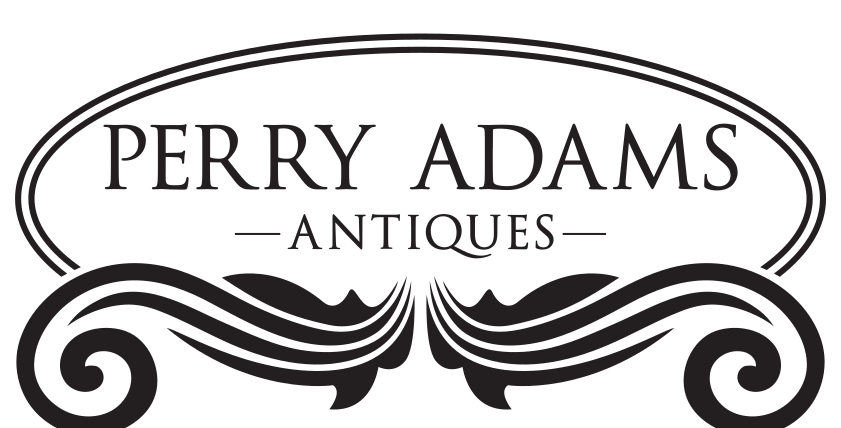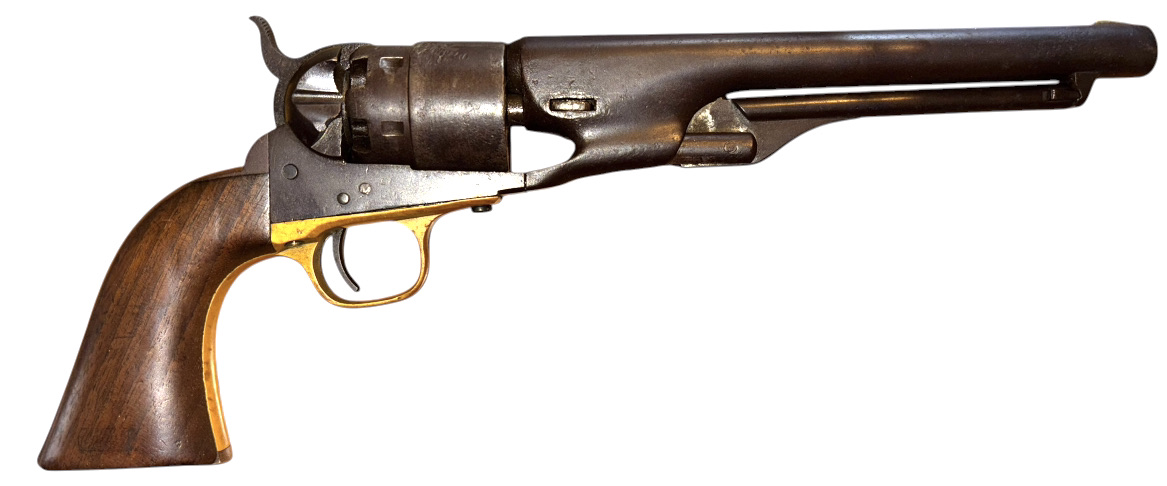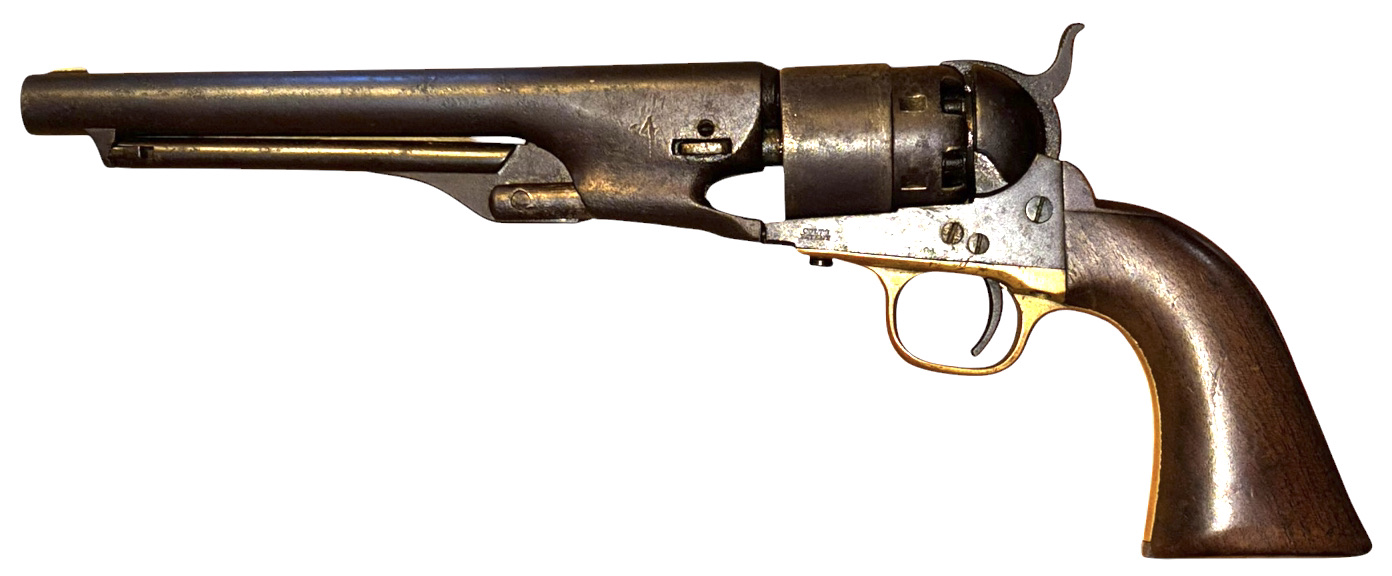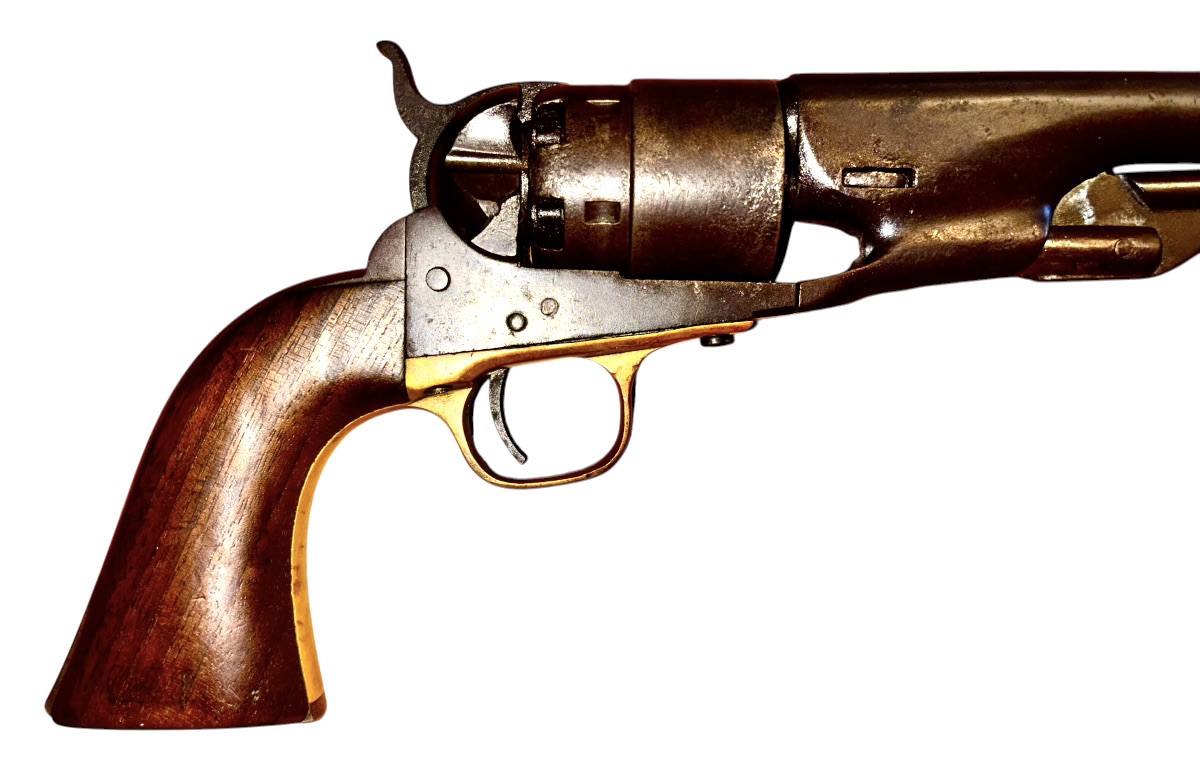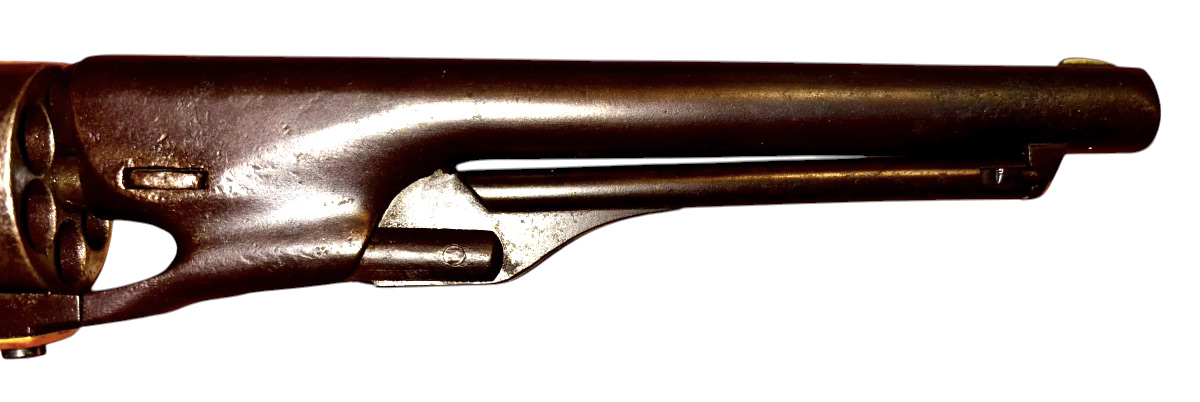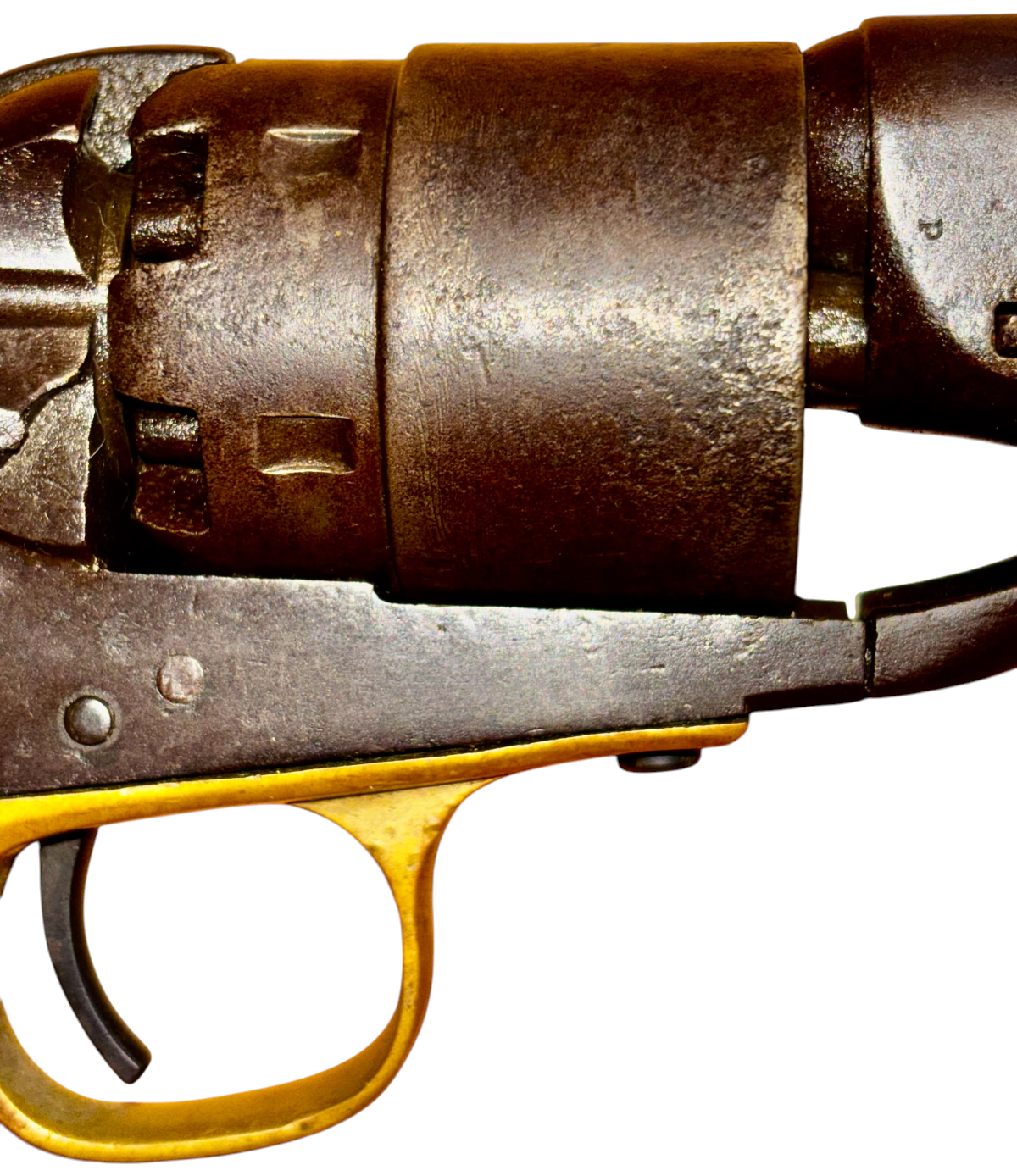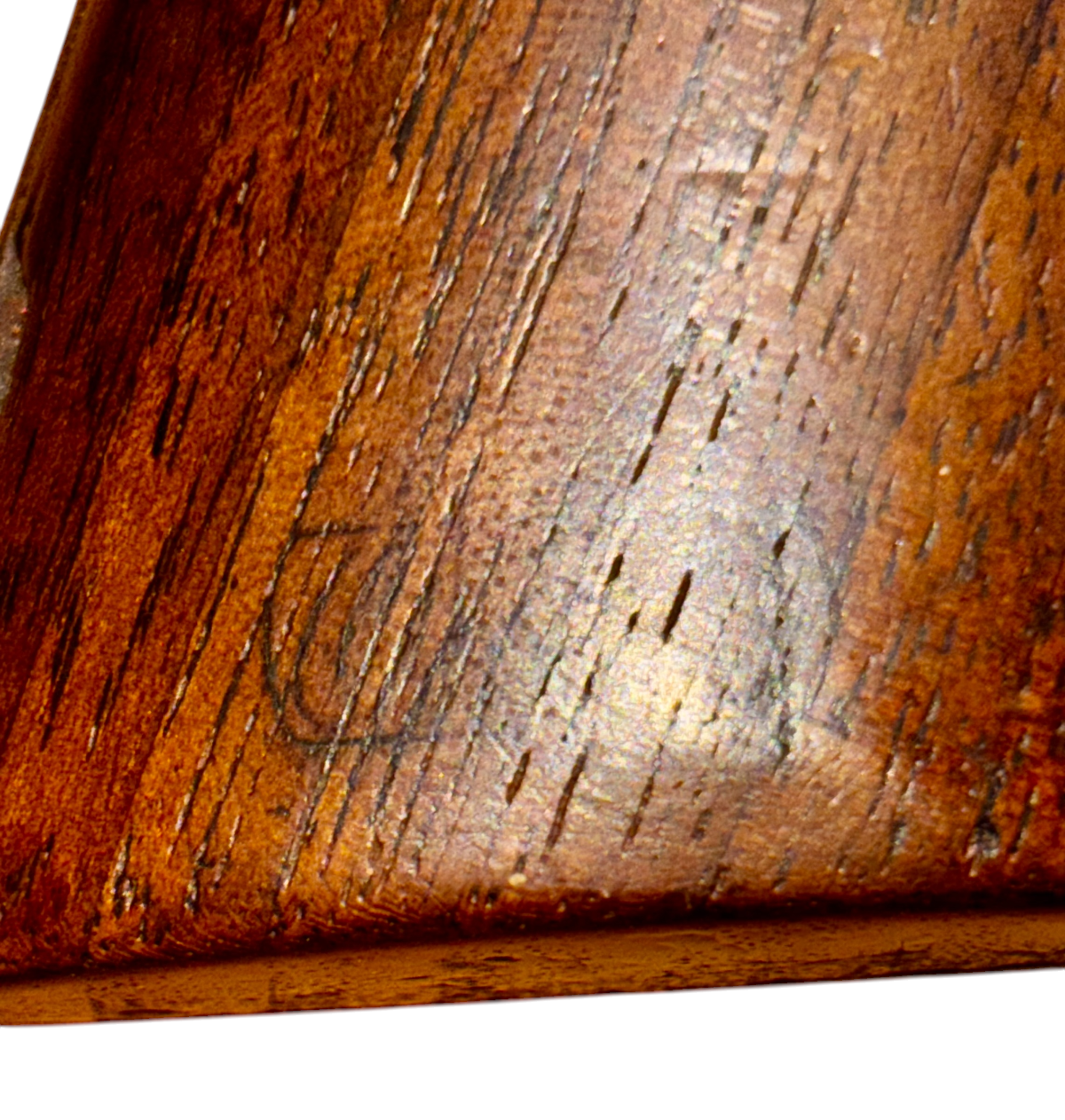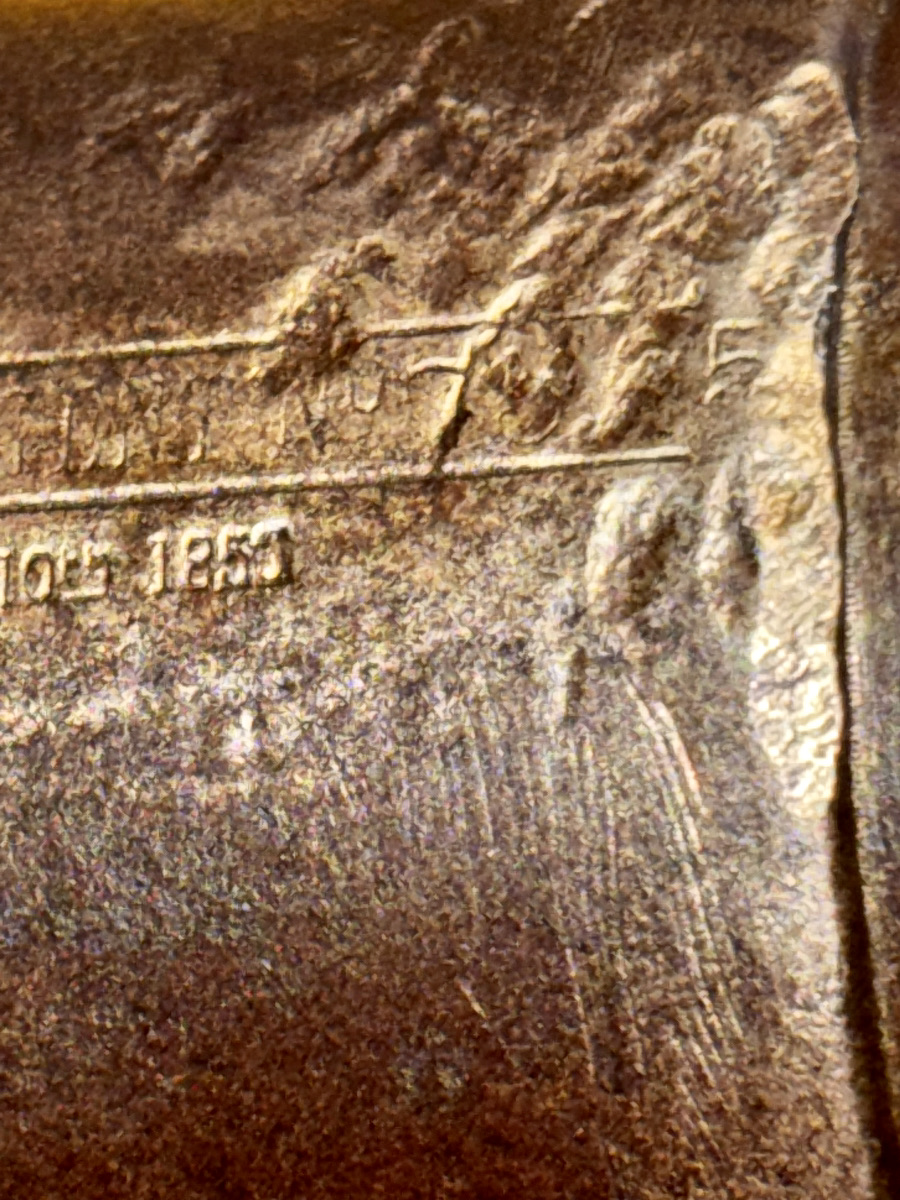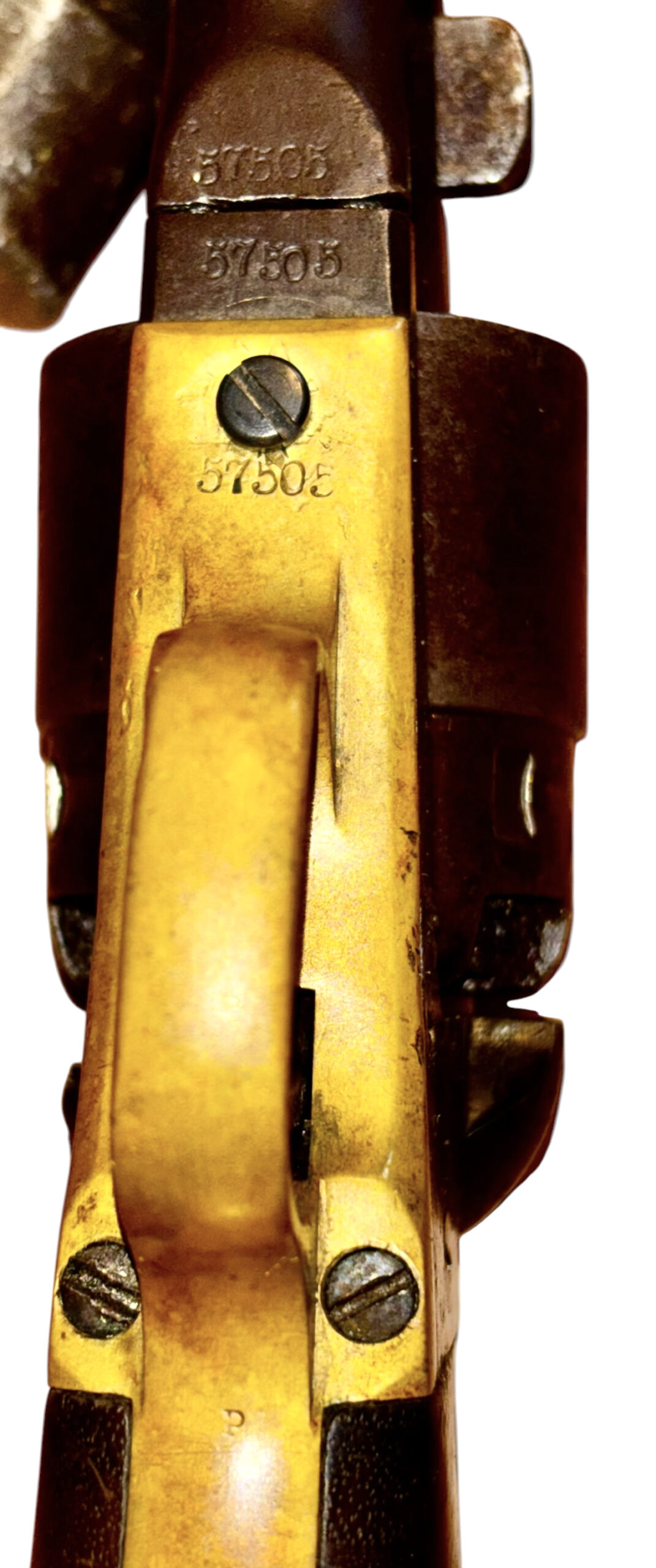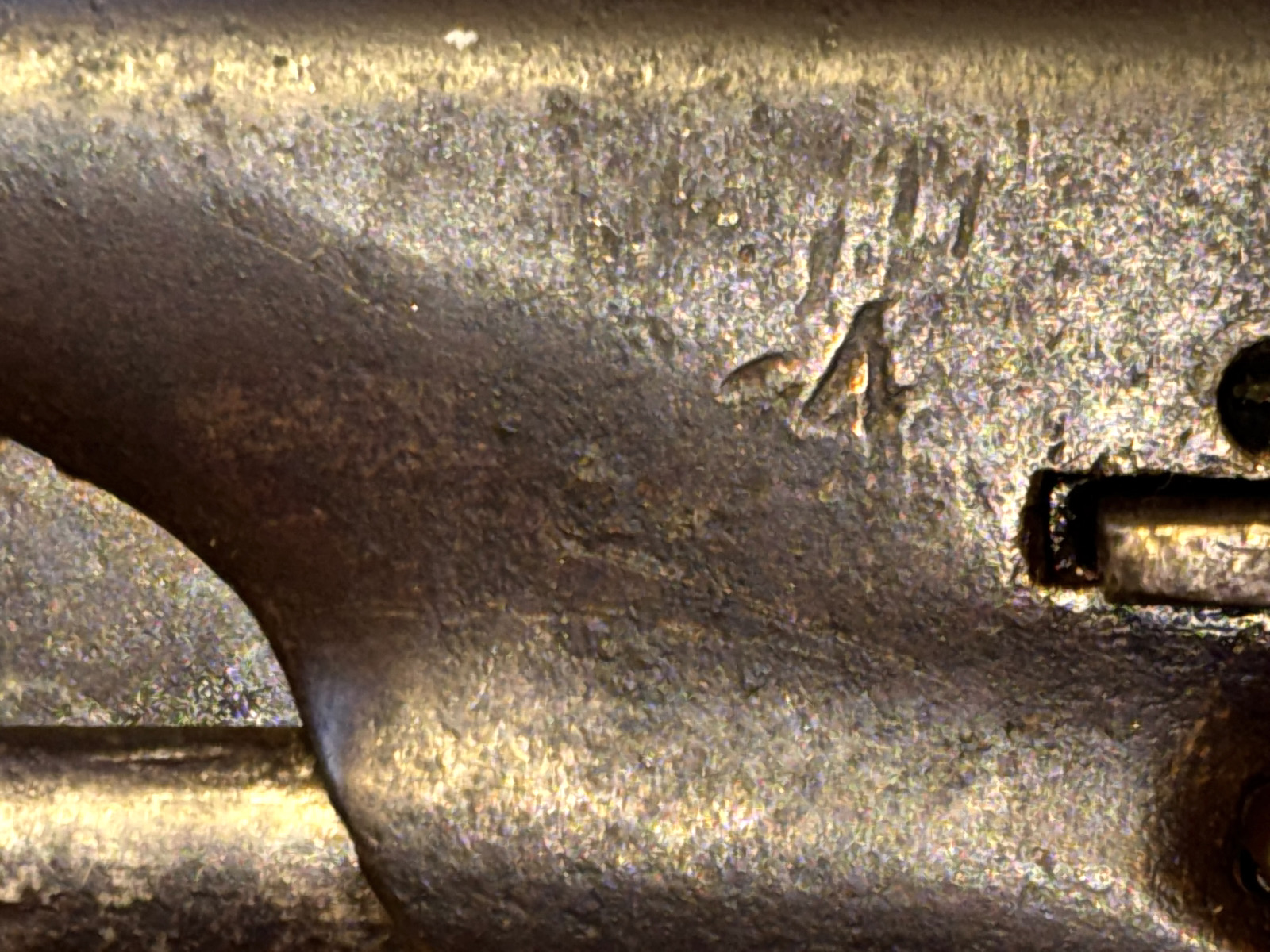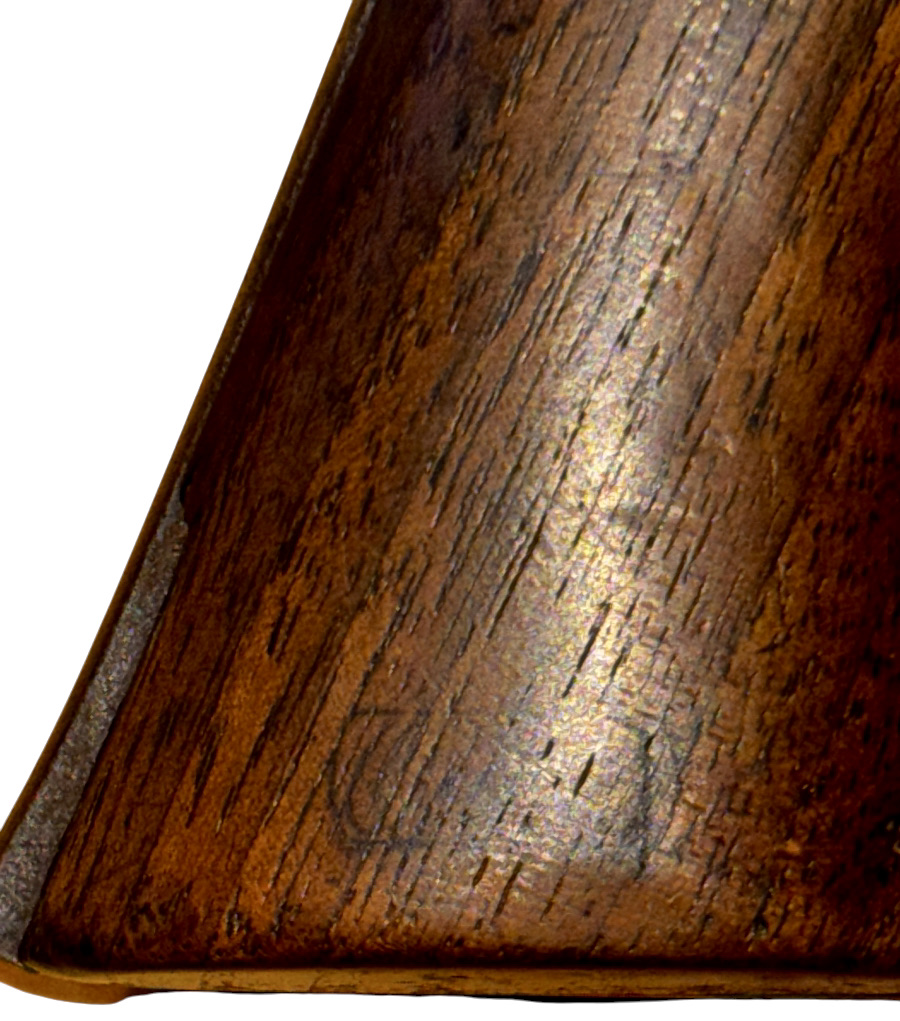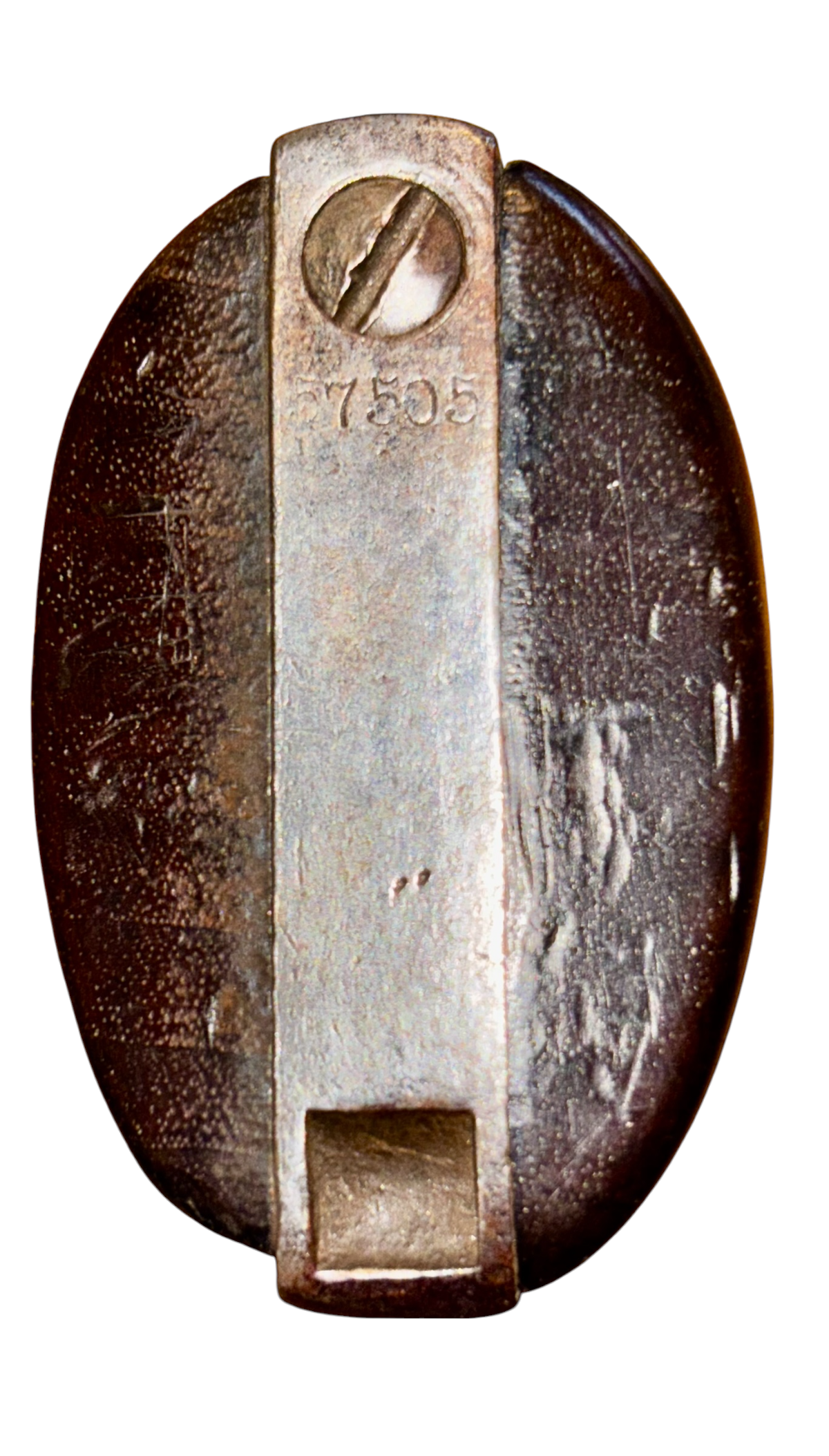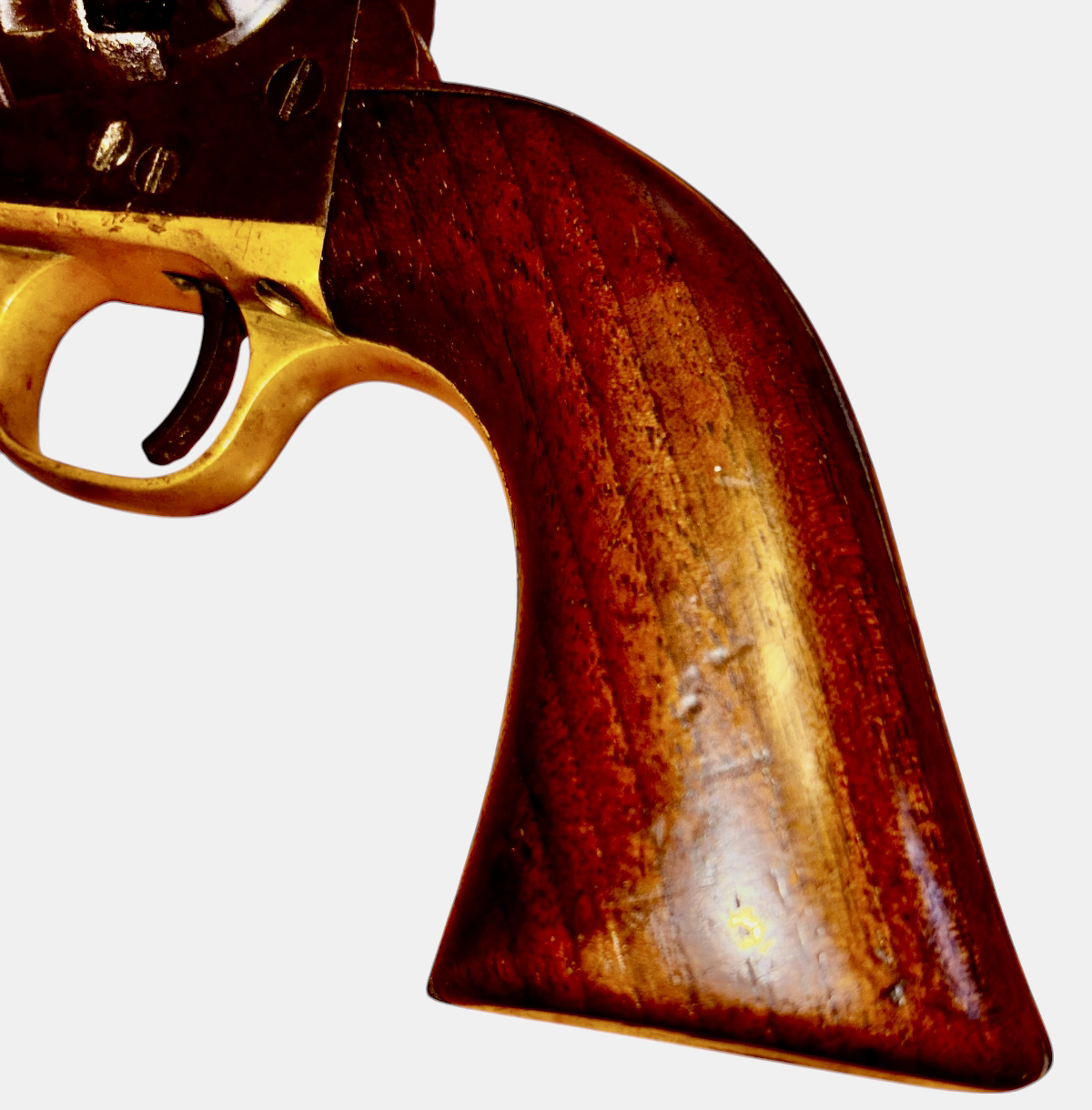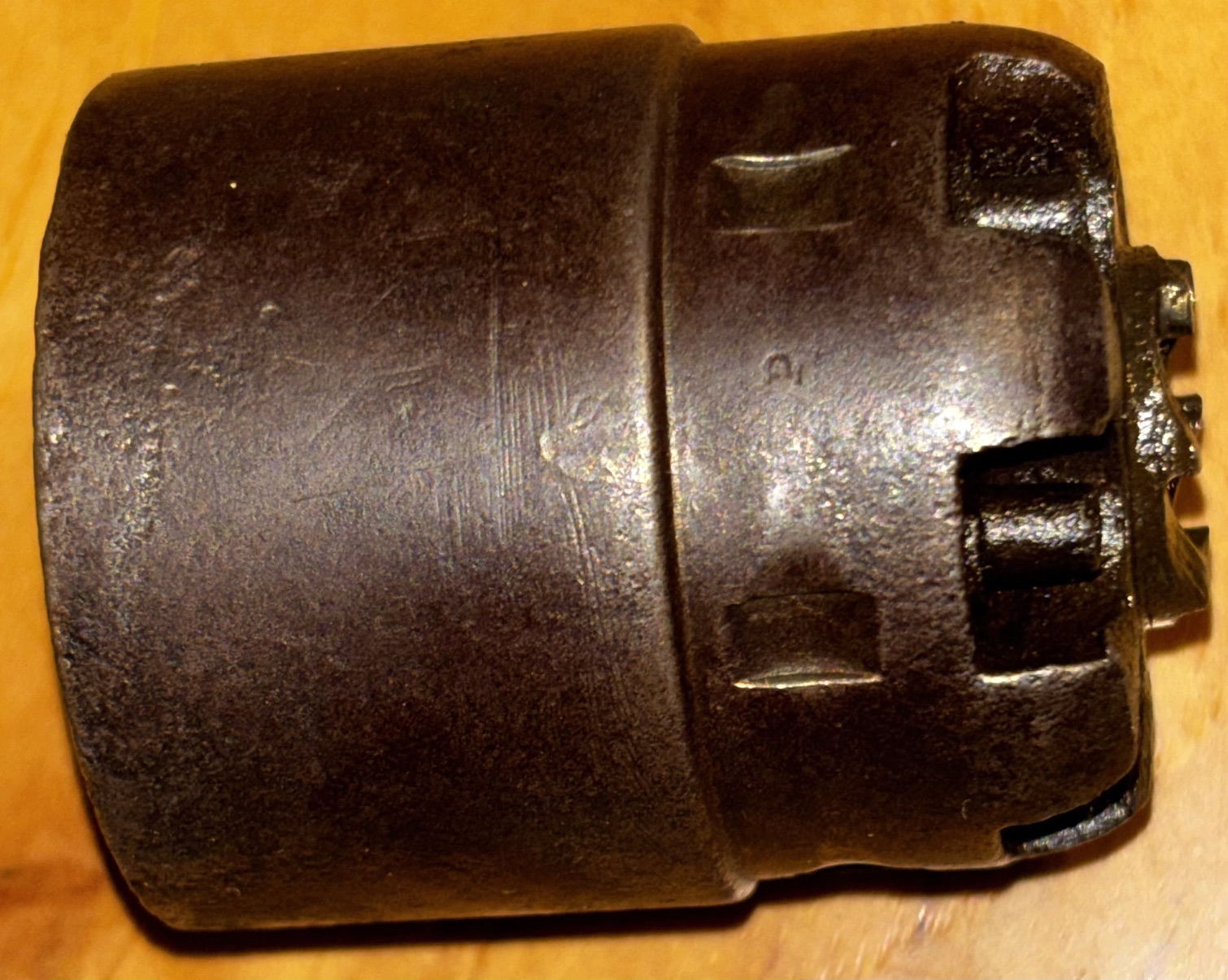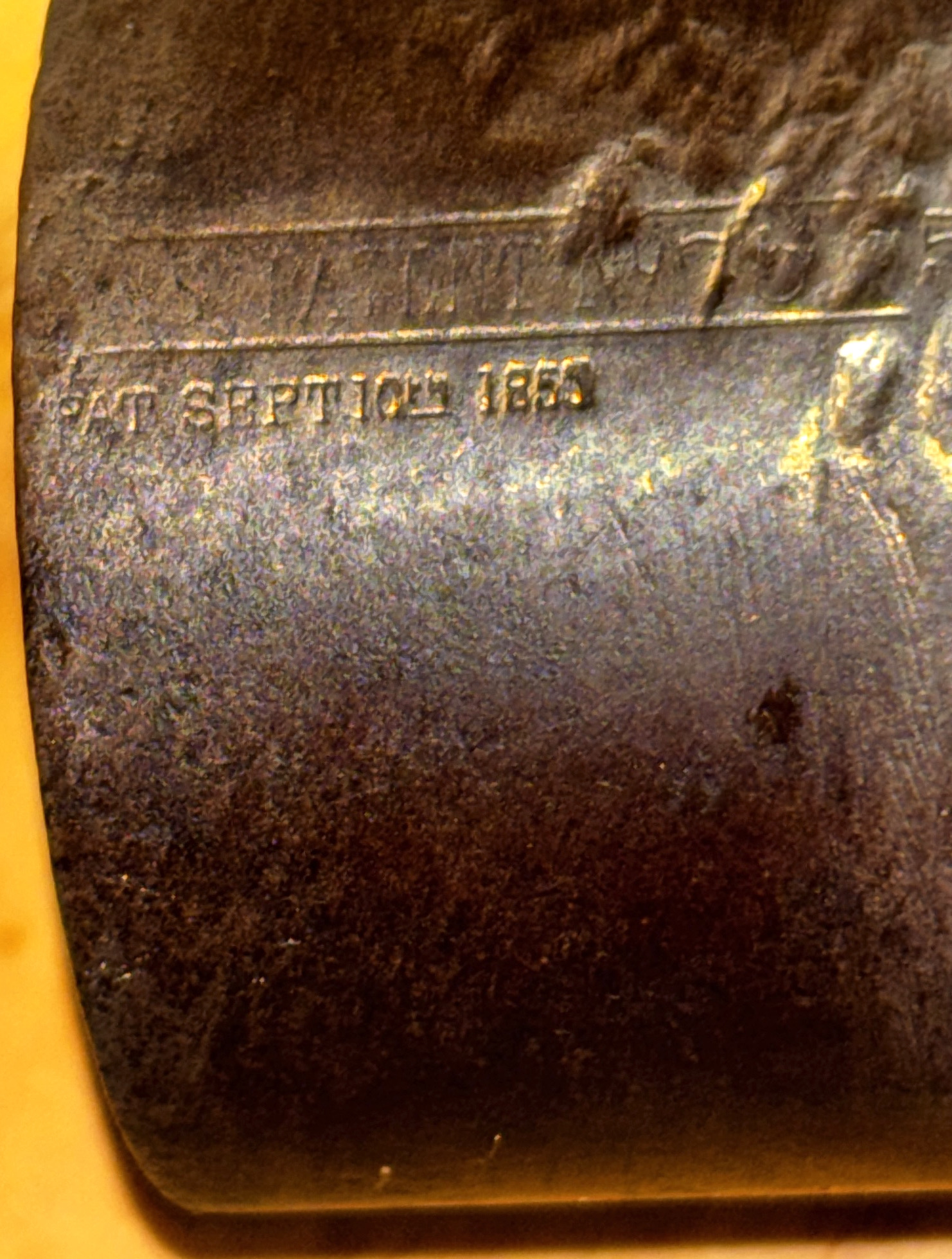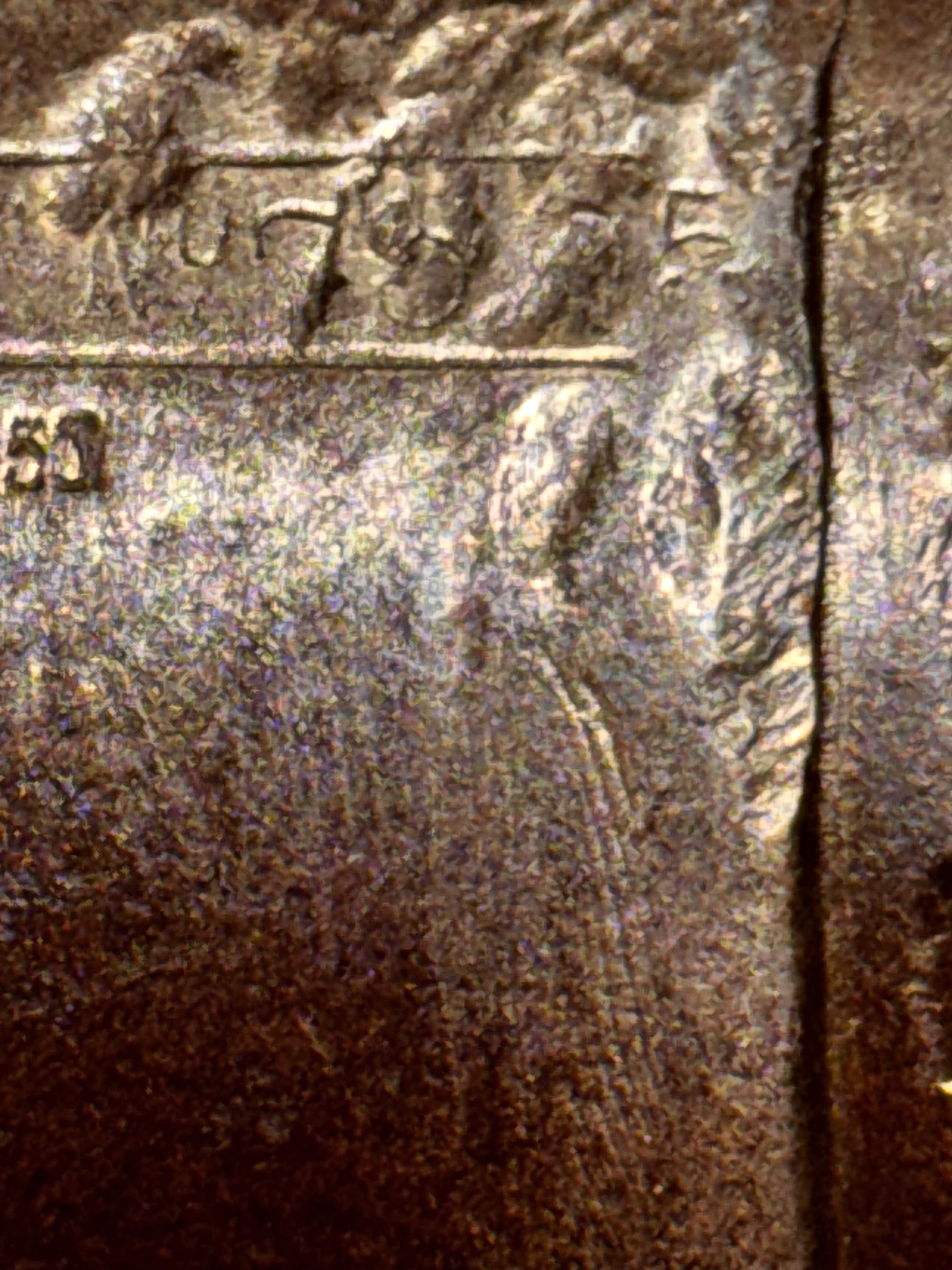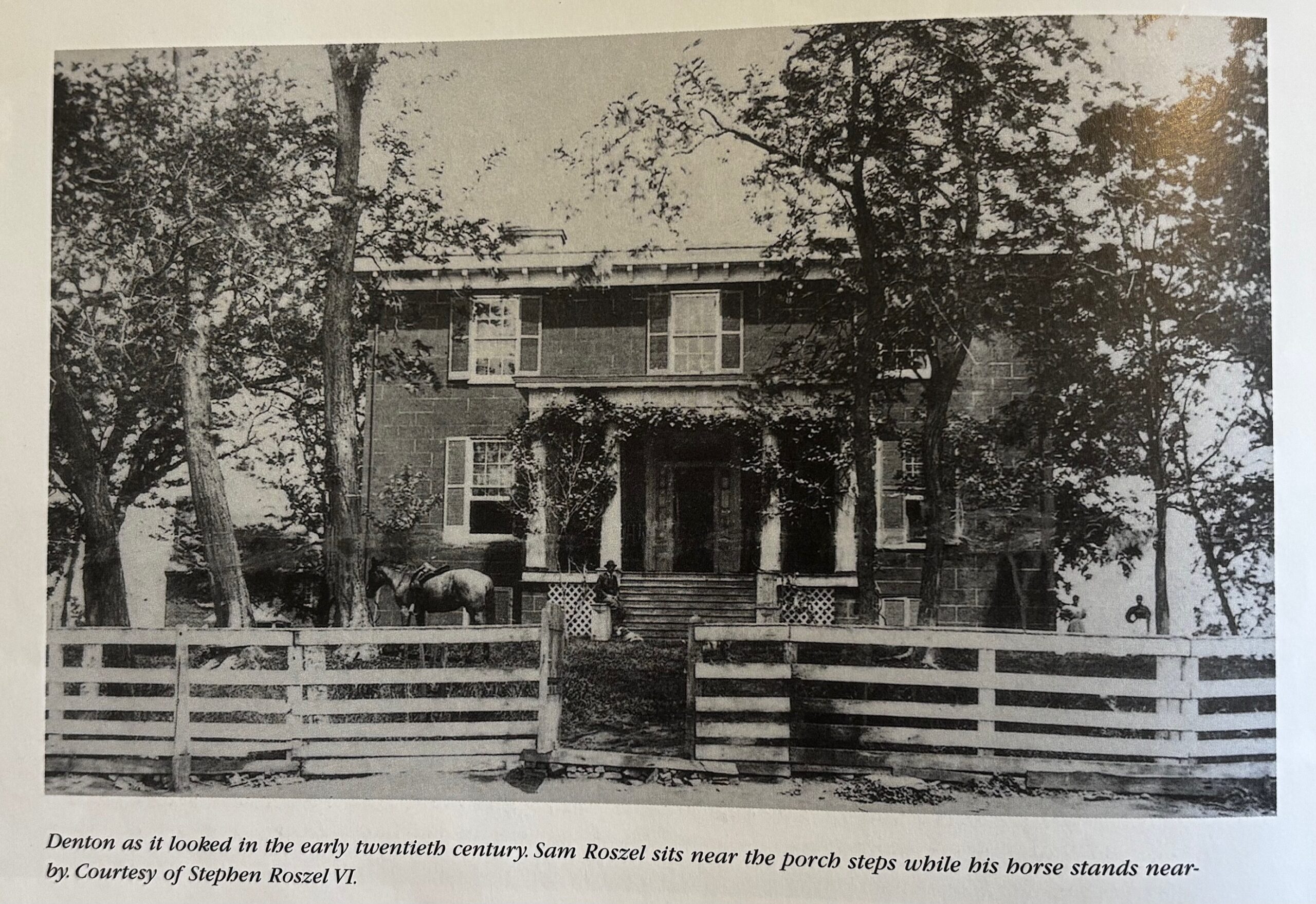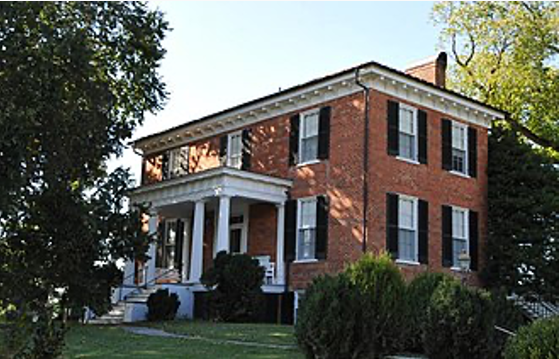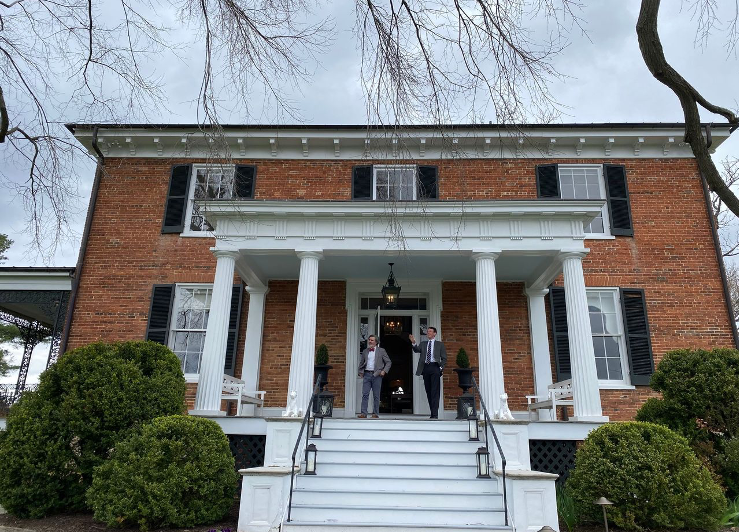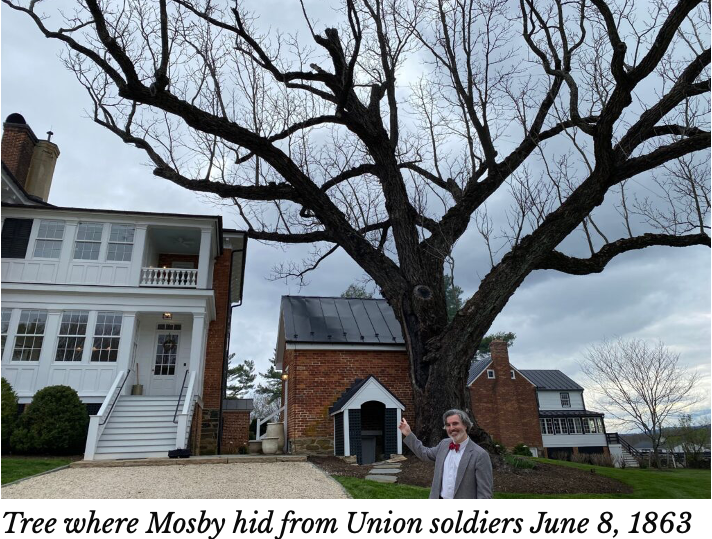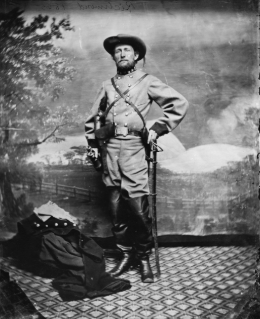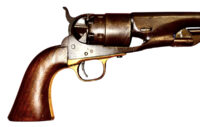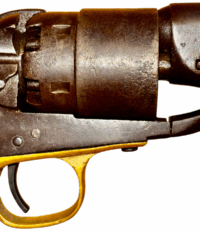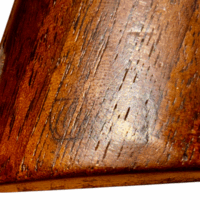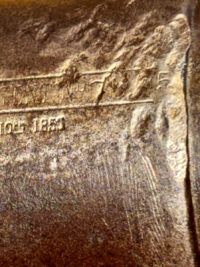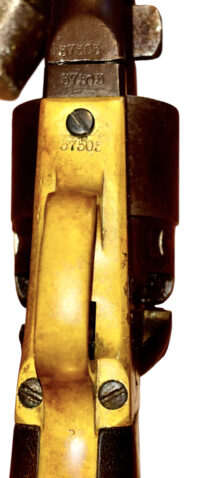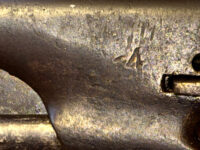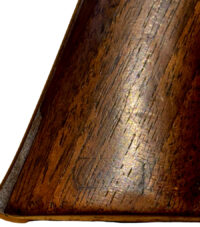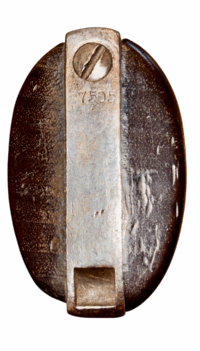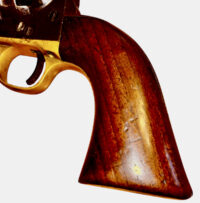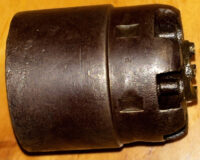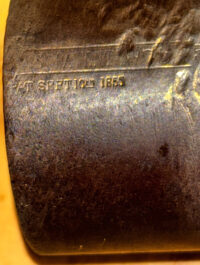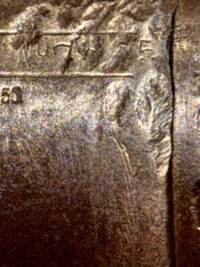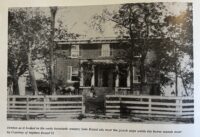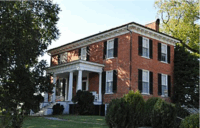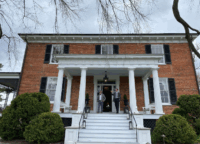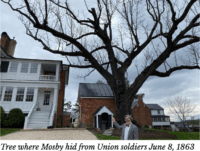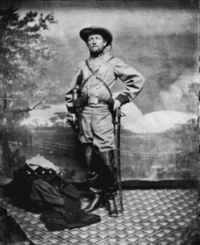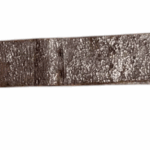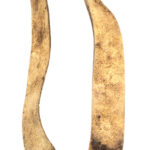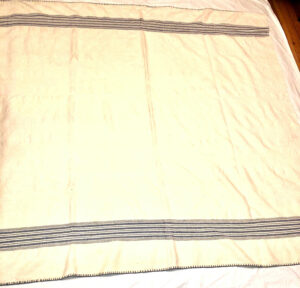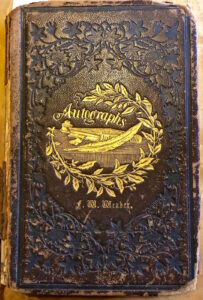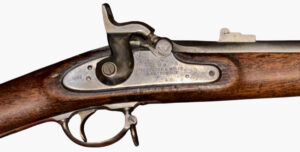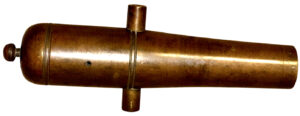M1860 Colt Army Revolver Found When Renovating the Room in the Antebellum House Called West View / Old Denton in Fauquier Co. Va. Where Mosby Stayed When He Escaped out a Window to Sit on a Tree Branch When Union Cavalry Came to the House
$3,850
ON HOLD
M1860 Colt Army Revolver Found When Renovating the Room in the Antebellum House Called West View / Old Denton in Fauquier Co. Va. Where Mosby Stayed When He Escaped out a Window to Sit on a Tree Branch When Union Cavalry Came to the House – This M1860 Army Colt was discovered hidden behind a wall board in the bedroom at West View, a mid-19th century, brick home located in Fauquier County, Virginia, where Col. John S. Mosby was staying in June 1863, when a New York cavalry contingent came to the house, in search of Mosby. Mosby avoided capture by climbing out of the bedroom window to perch in a large branch of an adjacent, walnut tree, until the Federal cavalry left. The revolver was discovered when the house was updated in 1910. The lineage and provenance of this revolver is corroborated by a notarized letter enumerated below, by the living ancestor of the former owners of West View, now called Old Denton; we have chosen to redact the names of the former and current owners – these will accrue to the notarized letter and be provided the buyer of the pistol. The revolver has matching serial numbers, with the exception of the wedge, which is seemingly a crude, period replacement and is not numbered. The serial number – 57505 – indicates that the revolver was manufactured in mid to late 1863. The revolver remains in overall good, working condition – there is one cylinder nipple missing; some cylinder scene remains; the bore is clean and displays considerable remaining rifling; all numbers match, as mentioned; of interest, is the number “4” stamped on the left side of the barrel, near the wedge – we are not sure of the significance of the number. The pistol retains a pleasing plum-gray finish, with no pitting or surface rust; there is a Federal inspector’s cartouche on the bottom of the left grip. Please review the history of West View / Old Denton as summarized below by the ancestor of the late 19th to early 20th century owners of the house – he discusses the discovery and associated provenance of the pistol. (The ancestor refers to the original name of the house as Western View.)
Text of Notarized Letter from Ancestor:
September 16, 2025
To Whom It May Concern:
I hereby provide this letter to document the provenance of a Colt Army Model 1860 revolver, chambered in .44 caliber and manufactured in 1863 (serial number: 57505) which has been in the continuous possession of my family for over a century. This revolver, a significant artifact of American history, is believed to have originally belonged to the renowned Confederate cavalry commander Colonel John Singleton Mosby, known as the “Gray Ghost” for his daring guerrilla tactics during the Civil War. As the current owner and eighth-generation descendant in our family line, I affirm the following details based on longstanding family tradition, corroborated by historical records of the estate where it was discovered.
The story of this revolver is inextricably linked to Old Denton, a historic property in Fauquier County, Virginia, originally known as Western View. Established in 1796 when James Adams acquired the initial 50 acres, the estate evolved into a prosperous farm under the Hathaway family. James Henry Hathaway (1812–1892), who married Mary Ann Adams in 1846 and later her sister Elizabeth in 1857, constructed the main dwelling around 1860—a two-story brick structure blending Greek Revival and Italianate architectural styles, initially stuccoed to resemble ashlar stone. This home overlooked the Blue Ridge Mountains, earning its name Western View, and included outbuildings such as a ca. 1860 brick meat house. The property’s strategic location in northern Virginia made it a hub during the Civil War. Western View served as a regular rendezvous point and temporary headquarters for John Singleton Mosby and his 43rd Battalion Virginia Cavalry—Mosby’s Rangers—from late 1862 onward.
Mosby, born in 1833 and rising from private to colonel through his audacious raids, operated primarily in Fauquier and Loudoun Counties, terrorizing Union supply lines and evading capture with remarkable cunning. Historical accounts, including the National Register of Historic Places nomination for Old Denton (listed in 2012), confirm that in June 1863—specifically the night of June 8–9—Mosby narrowly escaped Union cavalry by slipping from a second-floor bedroom window of the home into the branches of an adjacent black walnut tree, where he perched undetected for hours until the danger passed. This walnut tree, still standing on the property, is a tangible witness to his evasion tactics.
Mosby was a frequent guest at Western View during this period, at times accompanied by his wife Pauline. He was there when he received word of his promotion to captain, formalized on March 15, 1863, by General Robert E. Lee following Mosby’s successful raid on Fairfax Court House on March 9. On March 16, Mosby wrote to Pauline, “Come on immediately. The place I have selected for you to stay is Mr. Hathaway’s, a very nice place about four miles from White Plains…”. These events underscore the estate’s role in Confederate operations, as documented in sources such as Mosby’s memoirs, local histories like Old Plantations and Historic Homes Around Middleburg, Virginia, and books like Ranger Mosby, by Virgil Carrington Jones.
In 1906, following a contested will after Elizabeth Hathaway’s death in 1893, my great-great-grandparents ……… (sometimes spelled …..) and Sarah Josephine ….. acquired Western View from Mary V. Hathaway Fant, renaming it Old Denton in homage to their ancestral home in England. George …. passed away shortly before the deed was recorded, but the family retained ownership, with my great-grandfather, ….., consolidating the property through additional transactions in 1921 and 1929 before selling it that year to the prominent Young family who held it until 2006.
During renovations undertaken by …. in the early 20th century—likely around 1910, when the stucco was removed from the main house to expose the red brick and modern amenities like bathrooms were added—the revolver was discovered behind a wall panel in the upstairs bedroom. Since the Hathaway’s were civilians during the Civil War, the .44 Colt was believed to have been hidden by Mosby or one of his Rangers during their frequent stays. It remained undisturbed until unearthed by my ancestors, who recognized its historical significance. It has been passed down through direct male lineage in the …. family: from …….. to my grandfather, born in 1921 in the very upstairs bedroom from which Mosby made his famous escape; thence to my father …… VII; and now to me, …… No breaks in custody have occurred, and the firearm has been maintained as a cherished heirloom, symbolizing our family’s deep ties to Fauquier County’s Civil War heritage.
This Colt revolver, a standard-issue sidearm for Union and Confederate cavalry alike, bears the hallmarks of 1863 production with the serial number 57505 matching on all components, aligning perfectly with Mosby’s active service that year. There is an additional marking of the number “4” stamped on the side of the barrel, which presents the opportunity for further research. The single-action mechanism is strong and smooth, while the hammer cocks and the cylinder rotates and locks up perfectly.
I declare under penalty of perjury that the foregoing is true and correct to the best of my knowledge, based on family records, oral histories, and verifiable historical documentation. This statement is provided to facilitate the lawful transfer and sale of the revolver, attesting to its provenance as an authentic artifact connected to John Singleton Mosby, or one of his Rangers and the Confederacy. Should further verification be required, I am available to provide additional family documents or direct inquiries to relevant historical societies, such as the Virginia Department of Historic Resources or the Mosby Heritage Area Association.
Sincerely,
…..
Old Denton
| Old Denton |
| U.S. National Register of Historic Places |
| Virginia Landmarks Register |
Old Denton is a historic home and farm complex located near The Plains, Fauquier County, Virginia. The property includes a two-story, brick-masonry main dwelling (c. 1860), a secondary dwelling (c. 1820), a meat house (c. 1860), a stable (c. 1936), a tenant house (c. 1950), three early- 20th-century dry-laid stone walls, and an early-20th-century pump. The house features a one-story, negatively sloped, three-bay, classically inspired, Greek Doric order front porch.
It was listed on the National Register of Historic Places in 2012
Going Out on a Limb at Old Denton
Story by Heidi Baumstark
“Going out on a limb” is defined as putting oneself in a risky, extreme, or precarious situation.
That’s just what one Civil War soldier did as he literally clung to the branch of an old black walnut tree hiding from Union troops on the hunt for him. His name? None other than John Singleton Mosby. Climbing out of an upper bedroom window of a house in The Plains, he hung on to that tree the night of June 8, 1863, at a property called Old Denton.
This spring, the Virginia Piedmont Historical Area Association (VPHAA) sponsored a program at Old Denton, a 58-acre property owned by VPHAA members Garon and Donna Stutzman who graciously opened their home and grounds for tours, complete with hors d’oeuvres and cocktails near the fire pit — and next to the old black walnut tree.
That black walnut tree still stands on the northeast side of the main brick house, which was built circa 1860. Under that tree, guests gathered for a brief history lesson. VPHAA’s chair, C. Dulany Morison, welcomed guests and thanked the Stutzmans for their hospitality. Morison introduced VPHAA’s director of education, Travis Shaw, who delivered his talk about the property.
Story of Old Denton, Originally Known as Western View
In 1796, James Adams purchased the property and a vernacular brick house dating to 1820 was built for him. He lived with his two daughters, Mary Jane and Elizabeth. Old Denton was completed by James Henry Hathaway. He constructed his house in front of Adams’ house who became his father-in-law when Hathaway married Mary Jane.
In 1854, Mary Jane succumbed to typhoid fever. Three years later, James married her sister, Elizabeth. Originally, Old Denton was named Western View by the Hathaways for its view of the Blue Ridge Mountains. It stands as one of the last grand homes in Fauquier County built during Virginia’s late antebellum period (1832-1860) before the start of the Civil War.
Initially the house was stuccoed, which was later removed to expose the red brick exterior. A prosperous farmer, Hathaway sold agricultural supplies in the Landmark area southeast of Middleburg. Shaw explains, “This home is one of a kind in Fauquier County with its Greek revival and Italianate style which reflects Hathaway’s economic status.” A brick meat house circa 1860 is still on the property near the infamous “Mosby Tree.”
During the Civil War, this house would be a favored spot for Confederate meetings. In 1863, Mosby (known as the “Gray Ghost”) was visiting the Hathaways, and on June 8, 1863, Mosby’s wife, Pauline, had come to Old Denton to be with her husband. But someone tipped off a contingent of the 1st New York Cavalry that Mosby was there.
That evening, Union troops searched the property in the middle of the night forcing Mosby to climb out of the bedroom window and balance himself on the tree’s branch until the early morning. He left on June 9, and a little over 24 hours later, he formed the 43rd Virginia Cavalry Battalion (known as Mosby’s Rangers) in the parlor of the Caleb Rector House in Marshall, now the headquarters of the VPHAA.
After the war, James Hathaway successfully navigated the economic realities of the Reconstruction era (1865-1877) and was an important figure in upper Fauquier with his stylish home, which he owned until his death in 1893. Entering the 20th century, George and Sara Roszel acquired the home in 1906 and renamed it Denton after their home in England.
